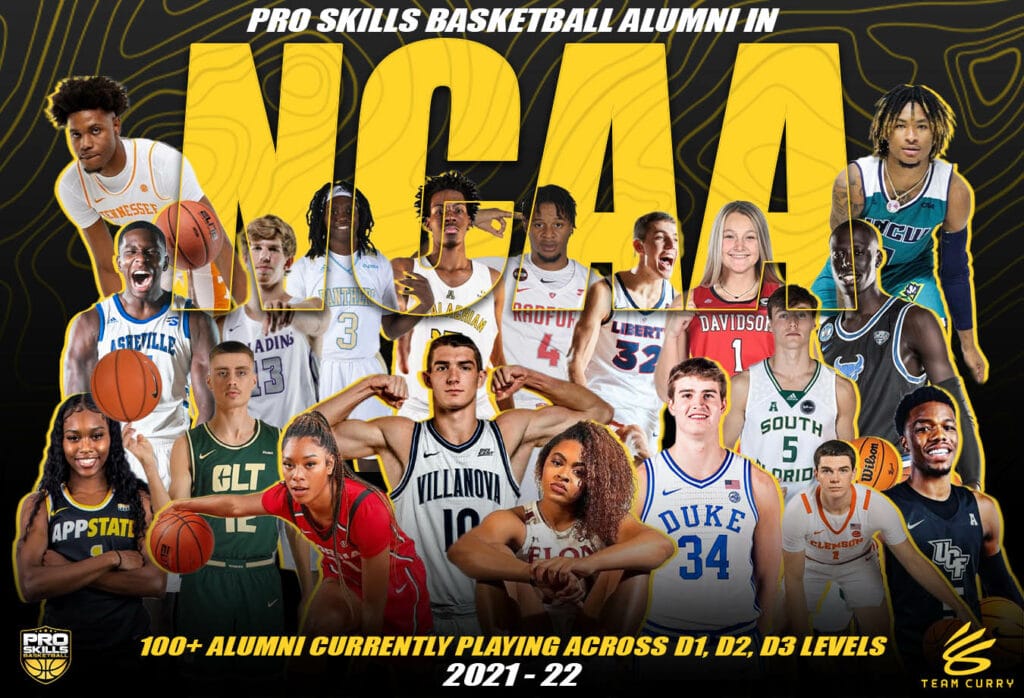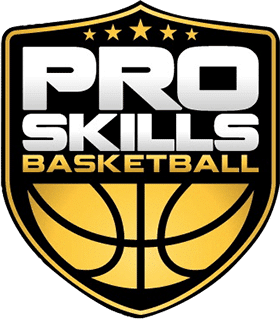
By: Brendan Winters, PSB Co-Founder and former Davidson and pro player
So, you want to play Division I college basketball?
You’re not alone. Thousands of young athletes grow up watching Duke vs. UNC, Kentucky vs. Louisville, or UConn vs. South Carolina and think, “That’s where I want to be.”
They see:
-
The crowd
-
The gear
-
The highlights
-
The glory
But they don’t always see:
-
The grind
-
The pressure
-
The competition
-
The truth
At Pro Skills Basketball, we’re here to educate and prepare—not hype things up. Whether you’re dreaming of D1 or still figuring out your path, you need to know the full picture.
📉 Most Players Will Never Play D1
Let’s get real with the numbers.
-
Only about 1% of high school basketball players make it to Division I.
-
The majority who do make it will not stay at their original school.
✅ In 2025, a record 2,320 men’s basketball players entered the NCAA transfer portal—that’s over 40% of all D1 men’s players.
❌ Nearly 30% did not land on another NCAA roster, meaning hundreds of players had nowhere to play.
That’s not to discourage you—but it’s important to understand how rare and how demanding this journey really is.
🔍 The 5 Hard Truths About D1 Basketball
1. D1 Basketball Redefines “Hard Work”
You might think you’re grinding now.
But D1 basketball requires a level of effort and intensity most high schoolers have never experienced. You’re expected to show up early, stay late, and give max effort in everything—from conditioning to film study to team lifts.
No more coasting.
If you’re not physically or mentally ready, you’ll be exposed quickly. Coaches have no time for half-speed. The standard is all-out, every day.
🎯 Want to start preparing? Check out our free basketball drills and workouts on YouTube.
2. It’s a Full-Time Job—Year-Round
Playing D1 basketball means:
-
Class from 8am–12pm
-
Lifts at 1pm
-
Film at 2pm
-
Practice from 3–6pm
-
Study hall at night
And that’s just a normal day in the offseason.
You don’t get normal school breaks.
-
Thanksgiving: Maybe 2 days off
-
Christmas: 3–5 days, if you’re lucky
-
Spring Break: Only if your team missed the tournament
-
Summer: You’ll likely be on campus for workouts and summer classes
Being a D1 athlete means sacrificing time, freedom, and social life. It’s a choice that requires maturity and resilience.
3. The Pressure Is Real—On and Off the Court
College basketball is a multi-billion-dollar business. Coaches are under constant pressure to win, and if they don’t, they’re replaced.
Which means players are under pressure too:
-
Competing against older players, transfers, and top freshmen
-
Dealing with coaches who are fighting for their careers
-
Navigating NIL expectations and social media pressure
If you’re not performing, the coach will find someone who can. And with the rise of the transfer portal, competition is coming from everywhere—at any time.
4. NIL Isn’t Free Money—It’s a New Kind of Pressure
The introduction of NIL (Name, Image, and Likeness) was a game-changer. Now, athletes can make money from:
-
Social media
-
Personal brands
-
Sponsorships
-
Camps and merch
But here’s the truth:
💡 Only a small percentage of players make real NIL money. Most of the deals go to top players in Power 5 programs.
And even for those who earn, it adds extra pressure:
-
Build your brand
-
Post on socials
-
Keep your sponsors happy
-
Perform to maintain deals
NIL is a perk, not a paycheck. Your value starts with your game.
5. Playing Time is Never Guaranteed
It doesn’t matter how many points you averaged in high school.
Every year, D1 programs bring in:
-
Graduate transfers
-
JuCo players
-
Top 100 recruits
-
International prospects
And coaches will always play whoever gives them the best chance to win.
Freshmen rarely start. In fact, most fight just to earn a few minutes. And if you can’t contribute quickly, another player is always waiting in the wings.
Bottom line: You’re always competing—for minutes, roles, and your spot on the team.
📊 The D1 Reality Check (2025 Data)
| Metric | 2021 | 2024 | 2025 |
|---|---|---|---|
| D1 Men’s Players in Transfer Portal | ~1,700 | ~2,083 | 2,320 |
| % of Total D1 Players in Portal | ~30% | ~37% | 40%+ |
| % Finding a New NCAA Home | ~70% | ~70% | ~70% |
| % Left Without a Team | ~30% | ~30% | ~30% |
⚖️ Should You Still Chase the D1 Dream?
Absolutely—if you’re willing to pay the price.
But don’t chase it blindly.
Be honest with yourself:
-
Do I love the game, or just the idea of D1?
-
Am I prepared for the grind?
-
Am I coachable, self-motivated, and resilient?
-
Would I consider D2 or D3 if it was the better fit?
Because here’s the truth: D2 and D3 basketball are legit.
They offer:
-
Great coaching
-
High-level play
-
Strong academics
-
More balance
Too many kids dismiss those opportunities and end up with no college offer at all.
🔗 Read: The Truth About Playing Division 2 College Basketball
🔗 Read: The Truth About Playing Division 3 College Basketball
👊 Final Word: Make an Informed Decision
Don’t just dream about D1—understand it.
If you still want it after reading all of this? Amazing. Go all in. Get to work. Ask for help. Train with purpose.
And know that at PSB, we’re here to guide players on every path—whether that’s D1, D2, D3, or just becoming the best version of yourself.
🎯 Ready to Start Your Journey?
Pro Skills Basketball offers Club Teams, Camps, Clinics, and Player Academies in 25+ cities nationwide.
👉 Find your city and sign up today
📩 Contact us at admin@proskillsbasketball.com
📞 Call us at 866-996-3888


 ESPN’s PAUL BIANCARDI ON COLLEGE BASKETBALL RECRUITING
ESPN’s PAUL BIANCARDI ON COLLEGE BASKETBALL RECRUITING